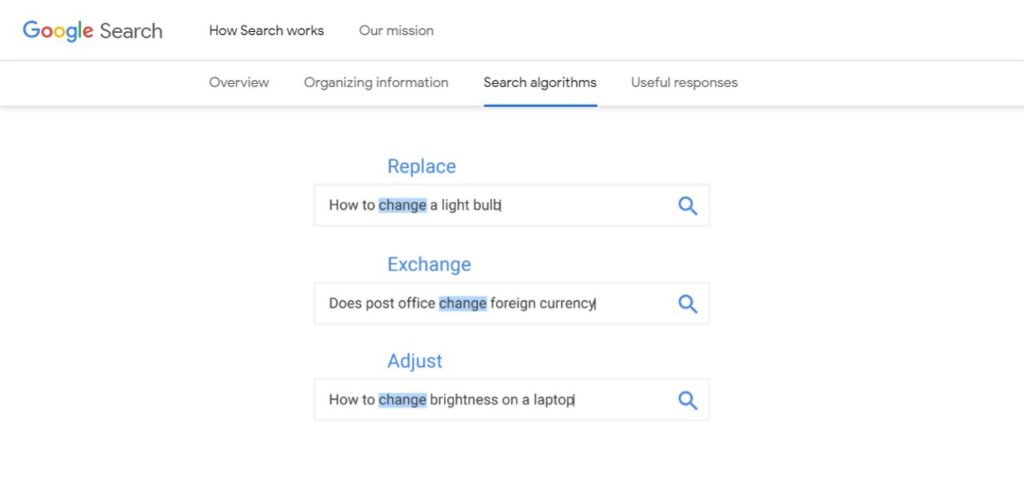Have you ever taken the time to think about your browsing habits? Like what you do when you search for something on Google. You type a phrase in the query box, click Enter, and check if the first few websites listed in the results have the information you need. If they don’t, you probably modify the phrase, hit the Enter key again, and see what comes up. That seemingly simple action forms the basis of Search Engine Optimization, or SEO.
Here’s an interesting statistic for you. Did you know that 92% of internet users never go past the first page of search results? This essentially means that if your business website doesn’t feature on page one of Google results, well, no one’s ever going to know that it exists. That’s where SEO comes in.
But what is SEO anyway? How does it work? Does your business even need it?
This article takes a deep dive into everything you need to know about SEO.
SEO - A Constantly Changing Algorithm
You’ve probably at least heard of SEO because it has been around since the internet first originated. But just because it’s been around a while doesn’t mean it is anything like it used to be. Back when the internet was first available to the public in the early 1990’s, very few people were actually on it. And of the people who were early adopters, what they were doing online is wildly different than what they use the internet for today.
Even though it might seem like the internet has been around forever, it really hasn’t. Even in the early to mid-2000’s the internet was barely populated compared to what it is like today. Now, not only is almost every human being on the planet connected to the world wide web in some form or fashion, but there are an average of more than 5 internet-connected devices for every human being on the planet.
So if you had to build a search engine called Zoogle, how would you determine what results you would list when a user Zoogled something from anywhere in the world? Your brain will hurt just thinking of tackling this problem and building an automated algorithm that generates results no matter what someone types. Understanding this algorithm and nurturing the elements that search engines deem most important is essentially what SEO is.
This is highly complex and the algorithm changes constantly as internet search continues to dominate the globe for new information discovery.
What is SEO - A Brief Overview
SEO refers to the set of rules that exist to optimize your website so that it ranks higher in search engine results. It makes your website’s pages more visible, which in turn enhances both the quantity and the quality of web traffic to your site through organic (non-paid) search engine results.
It involves getting into the minds of your target audience to preempt the questions they have about the products and services you offer and providing the answers they need. Sounds simple enough, doesn’t it? Well, it’s a lot more complex than that.
Knowing your audience’s intent is one thing. But delivering the answers to these questions in a way that a web crawler can find and understand is a whole other monster. Internet search engines use a process known as “crawling and indexing” to discover and catalog all the available content on the web.
The total number of websites on the internet spans well over 1.7 billion. Crawlers scour the content in all these sites, combing through images, videos, written copy, PDF, DOC files, etc., to check whether the information provided answers the query, and “ranking” the website based on how well it does this.
Why is SEO Important for Your Business
There are several techniques you can use to drive traffic to your website. You could use social media platforms like Facebook, LinkedIn, and Instagram. You could also use paid advertising to generate traffic.
However, the majority of visitors to websites come from search engines. Here are a couple of reasons why SEO is important for your business.
1. To Rank Higher on Search Engines
85.6% of internet users are more likely to click on the first five results displayed on page one of a SERP while the bottom five only get 6.4%. You might ask, what is SERP?

SERP is short for search engine results page. This is the results page that you see after you enter a search query in a search engine. It displays both paid and organic results. Some notable SERP features like those you’ll find on Google include images, videos, reviews, top stories, the knowledge panel, the instant answer box, among many more.
So it makes sense then that if you want to generate more traffic to your website, you need to make sure that it appears in one of the top five positions and also capture SERP feature opportunities.
2. Improves the User Experience
It’s one thing for potential leads to visit your website. But, it doesn’t help your cause if they exit within 10 seconds of getting there. SEO goes beyond optimizing your site to rank higher on the Google SERPs.
Employing good search engine practices improves the overall usability and user experience of your website, making it more likely for visitors to linger and explore what else you have to offer.
3. Puts You Ahead of the Competition
Every minute, an average of 3 new websites are created on the internet. That’s the reality most businesses face. Chances are there are hundreds, maybe even thousands of other businesses out there offering the same products and services that you are.
Search engine optimization keeps you relevant and far ahead of the competition. Optimizing your website means a higher SERP ranking, which equals more customers. But not just any customer. On average, users who find your site through organic search end up converting a whopping 15,000% more than through paid advertising.
4. Enhances Credibility
Internet users tend to trust websites that occupy the top slots on search engines more than they do those that rank lower. It’s the vote of confidence your business needs to attract new customers since they’ll believe that they are dealing with a reputable brand.
5. A Must for Big Websites
Big websites that have several authors can be all over the place if there’s no standard to guide how the content put out should be. Optimizing for search engines not only ensures that every piece of content adheres to a common framework before it is published, but also increases search engine traffic to the website. If you have a big site, you cannot afford to ignore the value that SEO adds to it.
Search Algorithms – What They Are and How They Work
Anytime you search for something online, the results you get, and the order in which they are displayed is based on a complex Google search algorithm. This takes into account several factors before it decides which web page will be displayed first, second, third, etc. based on relevance.
An algorithm, in a general sense, is like a mathematical equation. Suppose you were asked to count backward by 5s from 50 to 30. You would recite, “50, 45, 40, 35, 30”.
If you were to show how you arrived at those numbers, you would likely come up with a table displaying the initial number, which in this case is 50, and how you arrived at each of the subsequent numbers by subtracting 5 from the result in each step. This would help anyone understand why the result is not 49, 44, 39, 34, and 29, for instance.
The method you would use to explain how you arrived at the answers is essentially what an algorithm is.
How the Google Algorithm Works
An algorithm is a language that computers use to understand how to perform a particular task. Using this same basic definition, a Google search algorithm takes a set of inputs in the form of a query typed in the search box.

It then uses a set of factors to read a webpage and find the desirable traits that it associates as being the most relevant to the user. It assigns each one of them a predetermined numerical value before adding this to the result.
The algorithm assigns a higher level of importance to the webpage that has the most desirable traits and ranks it higher. Google does these calculations incredibly fast to deliver the results you seek in seconds.
Some of the key traits that the algorithms use to rank web pages based on their relevance include:
- The appearance of the keyword in the title, headers and meta description
- The number of organic links that lead to the page in question
- Whether the page is optimized for mobile viewing on tablets and smartphones
Of course, there are several other characteristics the Google algorithm uses for ranking. These are just some of the basic ones every website needs to have.
How Does the SEO Process Work
The SERP rank of a website can change from one day to the next as web developers modify the attributes that contribute to the position of a page. A webpage that ranked first-place for a particular keyword may fall to tenth a week later as its content and that of other related pages on the website change.
SEO is a fluid process made up of a framework that has rules and processes and can be broken down into three main stages:
Stage 1: Technical SEO
This is the first stage in the SEO process. It focuses primarily on the settings and configurations that your website needs to have, to make the work of web crawlers easier. This is important when it comes to them accessing, crawling, interpreting, and indexing your website.
It’s a one-off project, which means that if you get it right from the get-go, you don’t have to deal with it ever again. As the name suggests, technical SEO is an infrastructural process and doesn’t deal with the actual content of your website.
Some technical SEO best practices include (but are not limited to):
- Enhancing the site structure and URL
- Implementing a structured data markup to describe the data on your website in a language the search engines understand
- Making sure your site is optimized for mobile viewing
- Optimizing Robots.txt to instruct web crawlers which pages of your website they can crawl and add to their index
- Optimizing the 404 page
- Optimizing the speed of your website
- Optimizing the structure of your site’s URL by making it short, descriptive, incorporating target keywords, and using “-” to separate words
- Registering your site with webmaster tools
- Specifying a preferred domain so that it is accessible with and without the “www.” prefix
Stage 2: On Page SEO
This is the second stage of the search engine optimization process. The main focus of on page SEO is to provide sufficient information to search engines to understand the context and meaning of the information on your site’s webpages.
They do this by looking for signals that tell them what a particular page is all about. This is where things like SEO keywords, titles, headers, linking, website structure, etc. come into play.
Some of the most effective on page SEO techniques that are guaranteed to improve the ranking of your website include:
Publishing High-Quality Content
You might ask, what qualifies as “high-quality”? It should be original, well-researched, useful to add value to the reader, unique, have textual elements to accompany non-text content like images and videos, and unbiased. Webpages with long articles have proven to rank better than those with shorter articles.
Optimize the Page Title and Meta Descriptions

When web crawlers read your pages, they also check the page title and description for various keywords to understand what the page is about. So, you need to ensure that every page on your website has a unique title and is optimized with the relevant keywords. The title also needs to be short and descriptive, and have “power words” like “Top, Best, Ultimate, Checklist, etc.”
Optimize the Page Content
Before you publish any piece of content on your website, you need to make sure it is optimized for search engines. The first step of content SEO involves using a keyword research tool like Google Suggest to find out which search terms your target audience is using.
You can also use the “People Also Ask” section of the SERP to formulate some sub-headings based on those questions. These tools and techniques go a long way in helping you create content that satisfies their search intent.
Format the Content
Ensure that each page only has one H1 tag. Format all the other headers hierarchically, i.e., H2, H3, H4, and so forth. Make sure that the content on each page is readable by using bold, italics, or underline functions to highlight important sections of the text.
Break up large paragraphs into no more than three to four lines each and leave enough space between one paragraph and the next. This makes it easier for your website visitors to read your web copy without feeling like it’s too wordy.
Stage 3: Off Page SEO
This third stage of the SEO process involves off-site SEO techniques that go beyond the website design, configuration, and content. It requires you to perform certain tasks outside the boundaries of your site to increase web traffic and, in turn, rank higher in the SERPs.

The most effective off page SEO techniques that you can adopt for your website include:
- Link building – This involves building back-links to your site from other websites and blogs. This tells search engines that your site has relevant information that users might find useful
- Brand mentions – These don’t necessarily provide a link back to your website. Google crawlers pick up on mentions of your brand in social media, reviews, articles and web forums
- Social media marketing – This is now becoming part and parcel of SEO. Social media mentions are also picked up by crawlers and also play an integral part in improving the rank of your website
All these work to increase brand exposure, establish domain authority and trustworthiness, and boost your page ranking. Off-page search engine optimization plays a crucial role in any solid SEO strategy.
Local SEO
Local SEO is a branch of search engine optimization that focuses primarily on making websites appear in local search results. This is a strategic method for brick-and-mortar businesses to optimize their websites and connect to their target within their locale. Some of the businesses that can benefit from local SEO include lawyers, doctors, restaurants, plumbers, construction contractors, among many others.
Optimizing for local searches isn’t all that different from optimizing for technical, on-page, and off-page SEO. The only difference is that it focuses on the searches people perform in the immediate area.
Google’s local search algorithm combines conventional search results with local images, news, maps, local ads, and lots of other verticals to generate accurate, relevant, and useful local search results.
SEO is About Quantity, Quality and Speed
SEO is a complex process that involves several moving parts. The industry-accepted best practices are constantly evolving with changing consumer behavior and emerging technology.
Nevertheless, it remains the single most important tool for businesses that want to be visible online, to increase their brand awareness, generate sales, and grow revenue. The efforts will be well worth it once you see the difference it makes to your bottom line. If you need help, talk to an SEO consultant to help you with your strategy.

